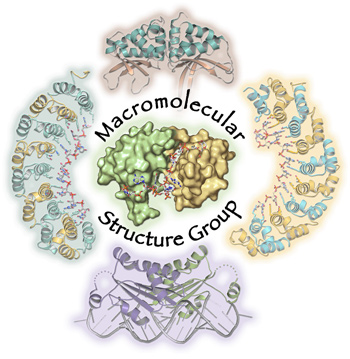mRNA Stability & Translation
-

-
Traci M. Hall, Ph.D.
Deputy Chief, Epigenetics & RNA Biology Laboratory and Principal Investigator -
Tel 984-287-3556
Fax 301-480-3055
[email protected] -
P.O. Box 12233Mail Drop F3-05Durham, NC 27709

Research Summary
The Macromolecular Structure Group, led by Traci M.T. Hall, Ph.D., studies mechanisms of post-transcriptional gene regulation to understand how RNA regulatory pathways operate in stem cell biology, embryonic development, and response to environmental stimuli. The Hall lab conducts fundamental research, integrating molecular, biochemical, and structural approaches to understand the function of macromolecules in different biological systems. Much of our lab’s research begins with a discovery phase of crystal structure determination. In-depth analysis then guides functional studies in vitro and in vivo.
A long-term goal is to define the relationship between structure, sequence specificity, and gene regulatory networks of Pumilio/fem-3 mRNA binding factor (PUF) proteins. Recent results provide new molecular mechanisms for refining PUF-mediated gene regulatory networks through partnership with other proteins. Future work includes examining how PUF proteins assemble higher order regulatory complexes on target mRNAs in human, C. elegans, and Drosophila systems.
The Hall lab is also characterizing the specificity of target recognition and complex formation by other RNA regulatory proteins. The role of these pathways in environmental response has not been extensively explored, providing the opportunity to lay the groundwork for future understanding.
Major areas of research:
- Linking understanding of structure and biological function of RNA regulatory complexes
- Determining how protein complexes recognize and regulate RNA targets and recruit effector machinery
- Examining how specificity defines networks of gene regulation
- Designing sequence-specific RNA-binding proteins
Current projects:
- For more than 20 years, we have been fascinated by the ability of PUF RNA-binding proteins to recognize and regulate specific mRNA targets. We are still discovering new things about how the PUF proteins have evolved for RNA regulation and how they partner with other RNA regulatory proteins.
- We use structure to study post-transcriptional gene regulation beyond PUF proteins. Our recent efforts aim to understand non-coding RNA processing and function, such as production of microRNAs and processing of pre-tRNAs.
- Using the human Pumilio1 RNA-binding domain as a template, creating designed RNA-binding proteins that recognize specific RNA sequences and can be used as research tools.
Hall earned her B.S. in biochemistry from the University of California, Los Angeles, and her Ph.D. in pharmacology and molecular sciences from the Johns Hopkins University School of Medicine. She was an American Association for the Advancement of Science Diplomacy Fellow and a postdoctoral fellow with Professor Daniel J. Leahy at Johns Hopkins before joining the NIEHS in 1998. She served as acting Lab Chief for the NIEHS Laboratory of Structural Biology from 2012–2014.


